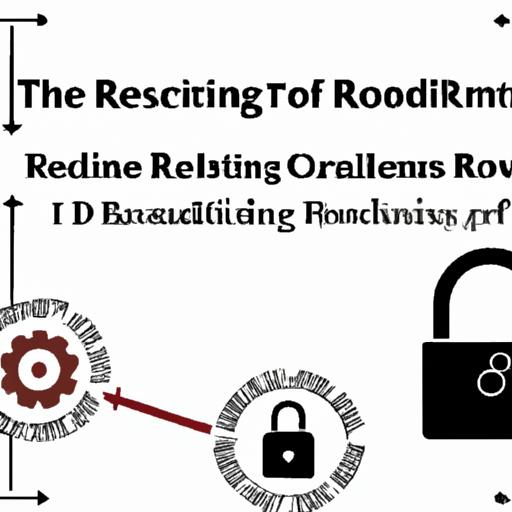Unlock operational efficiency & enhance competitiveness by reducing r processing time. Increase productivity, improve customer satisfaction & achieve cost savings.
Introduction

In today’s fast-paced world, time is of the essence. Whether you’re running a manufacturing facility, managing a service-oriented business, or even overseeing a personal project, the speed at which tasks are completed can make all the difference. That’s where “r processing time” comes into play – a key factor in optimizing operations and achieving remarkable efficiency across various industries.
But what exactly is “r processing time”? In simple terms, it refers to the duration it takes to complete a particular task, process, or operation. From order fulfillment to project completion, every step involved in your workflow contributes to the overall processing time. By understanding and optimizing this crucial metric, you can unlock higher productivity levels, improve customer satisfaction, and gain a competitive edge.
Think about it – have you ever felt frustrated waiting for a product or service to be delivered? The longer it takes, the more dissatisfied you become. The same principle applies to your own business or personal endeavors. By minimizing processing time, you can ensure timely delivery, meet customer expectations, and enhance your reputation as a reliable and efficient entity.
Now that we’ve established the significance of processing time, let’s delve deeper into the factors that influence it and explore techniques to reduce it. By the end of this article, you’ll be equipped with practical strategies to streamline your operations, maximize productivity, and achieve your goals in record time. So, let’s get started on this journey towards operational excellence!
Factors Affecting R Processing Time

Efficiently managing and reducing processing time requires a comprehensive understanding of the various factors that influence it. Let’s explore the key elements that play a crucial role in determining the duration of your operations.
A. Resource Allocation and Management
One of the primary factors affecting processing time is how well your resources are allocated and managed. Are you utilizing your workforce, equipment, and materials effectively? Inefficient resource allocation can lead to bottlenecks and delays in completing tasks. By identifying and addressing resource gaps, you can optimize productivity and reduce processing time.
B. Workflow and Process Design
The design of your workflow and processes is another critical factor impacting processing time. Are your processes streamlined and well-structured, or do they involve unnecessary steps and redundancies? By analyzing and optimizing your workflow, you can eliminate bottlenecks, reduce waiting times, and ensure smooth task transitions, ultimately enhancing processing time.
C. Technology and Automation
The level of technology and automation integrated into your operations significantly influences processing time. Are you leveraging cutting-edge tools and software to streamline your processes? Automation can eliminate manual tasks, reduce errors, and expedite operations, leading to faster processing times. Investing in the right technology can revolutionize your efficiency levels and yield significant time savings.
D. Skill Level and Training of Personnel
The skill level and training of your personnel directly impact processing time. Do your employees possess the necessary expertise and knowledge to perform tasks efficiently? By investing in continuous training and development programs, you can enhance their skills, improve their productivity, and ultimately reduce processing time.
E. External Dependencies and Constraints
External dependencies and constraints can also affect processing time. Are you reliant on external suppliers, partners, or regulatory processes? Identifying and addressing these dependencies, whether through alternative suppliers or streamlining communication channels, can minimize delays and optimize processing time.
By recognizing and addressing these factors, you can make tangible improvements in your processing time. In the next section, we will explore effective techniques and strategies to reduce processing time and achieve operational excellence.
Techniques to Reduce R Processing Time
In our quest to optimize processing time, it’s essential to explore effective strategies that can minimize delays and propel us towards faster and more efficient operations. Let’s take a closer look at some practical techniques that can help us achieve this goal:
A. Streamlining Workflow Processes
One of the most impactful ways to reduce processing time is by streamlining your workflow processes. Start by critically analyzing each step of your operation and identify any unnecessary or redundant tasks. Look for opportunities to simplify and automate processes, eliminating any bottlenecks or time-consuming activities. By streamlining your workflow, you can ensure a smooth and seamless progression from one task to the next, significantly reducing processing time.
B. Implementing Efficient Resource Allocation Strategies
Optimal resource allocation is crucial in minimizing processing time. Assess your available resources and identify areas where improvements can be made. Allocate resources strategically, ensuring that each task has the necessary personnel, equipment, and materials to be completed efficiently. Avoid overloading certain individuals or departments while leaving others underutilized. By effectively managing and distributing resources, you can streamline operations and expedite processing time.
C. Utilizing Advanced Technologies and Automation Tools
In today’s digital era, leveraging advanced technologies and automation tools is key to reducing processing time. Embrace software solutions, robotics, and artificial intelligence to automate repetitive tasks and accelerate processes. From automated data entry to robotic process automation, these tools can significantly boost productivity and minimize human error. By harnessing the power of technology, you can achieve faster and more accurate results, leading to shorter processing times.
D. Enhancing Personnel Skills through Training and Development Programs
Investing in your personnel’s skills and knowledge is a valuable strategy to reduce processing time. Provide comprehensive training programs that focus on enhancing efficiency, time management, and task prioritization. Equip your team with the necessary skills and tools to perform their tasks effectively and efficiently. A well-trained and motivated workforce can contribute to faster turnaround times and improved overall processing efficiency.
E. Identifying and Addressing External Dependencies and Constraints
External dependencies and constraints can significantly impact processing time. Identify any external factors that may cause delays or interruptions in your operations. Whether it’s vendor delays, regulatory requirements, or logistical challenges, it’s crucial to proactively address these issues. Establish contingency plans and alternative solutions to mitigate the impact of external dependencies. By anticipating and addressing these constraints, you can minimize processing time and ensure smoother operations.
By implementing these techniques, you can pave the way for faster, more efficient processes, and ultimately reduce your overall processing time. Now that we’ve explored these strategies, let’s dive into real-life case studies where organizations successfully achieved remarkable reductions in their processing time.
Case Studies: Successful Reduction of R Processing Time
When it comes to improving operational efficiency, real-life examples often provide the most valuable insights. Let’s dive into some compelling case studies where organizations successfully optimized their processing time, achieving remarkable results.
A. Company X: Implementing Process Automation to Reduce Processing Time by 50%
Company X, a leading manufacturing firm, faced a significant challenge in meeting customer demands due to prolonged processing time. To overcome this hurdle, they decided to embrace process automation. By leveraging cutting-edge technologies, they streamlined their workflows, eliminating manual bottlenecks, and reducing human error. The results were astounding – a staggering 50% reduction in processing time. This not only allowed Company X to fulfill orders faster but also enhanced their overall operational efficiency.
B. Organization Y: Restructuring Workflows to Achieve a 30% Reduction in Processing Time
Organization Y, a service-oriented company, recognized the need for a more efficient workflow structure to meet increasing customer expectations. Through a meticulous analysis of their processes, they identified areas of improvement and introduced a revamped workflow design. By eliminating redundant steps, optimizing task allocation, and implementing cross-functional collaboration, Organization Y achieved a remarkable 30% reduction in processing time. This enabled them to deliver services promptly, surpassing customer expectations and gaining a competitive advantage in the market.
C. Institution Z: Investing in Personnel Training Resulting in a 25% Decrease in Processing Time
Institution Z, a renowned educational institution, faced challenges in handling administrative tasks efficiently. Recognizing the critical role of skilled personnel, they invested in comprehensive training programs for their staff. By equipping their team with the necessary skills and knowledge, Institution Z witnessed a significant improvement in their processing time. With a 25% decrease in processing time, they were able to handle administrative tasks more swiftly and allocate their resources more effectively, ultimately enhancing the overall quality of their services.
These case studies highlight the transformative power of optimizing processing time. Whether through process automation, workflow restructuring, or personnel training, organizations can achieve substantial improvements in their operational efficiency. By learning from these success stories, you can identify strategies that align with your unique requirements and embark on your journey towards reduced processing time and enhanced productivity.
Conclusion
In a world that demands efficiency and promptness, optimizing processing time has become a crucial aspect of operations across industries. By reducing “r processing time,” you can unlock a multitude of benefits that ultimately contribute to your success.
Throughout this article, we have explored the significance of processing time and the various factors that influence it. We have also discussed effective techniques to minimize processing time, including streamlining workflows, implementing efficient resource allocation strategies, leveraging advanced technologies, investing in personnel training, and addressing external dependencies and constraints.
By implementing these strategies and reducing processing time, you can reap several advantages. Firstly, increased productivity and operational efficiency can propel your business forward, allowing you to accomplish more in less time. Secondly, improved customer satisfaction and service level agreements will strengthen your reputation and foster loyal relationships with clients. Thirdly, cost savings and resource optimization will contribute to your bottom line, allowing you to allocate resources effectively. Lastly, optimizing processing time enhances your competitiveness in the market, giving you an edge over your competitors.
It is essential to remember that optimizing processing time is an ongoing process. Continuous assessment, adaptation, and improvement are necessary to stay ahead in today’s dynamic business landscape. By incorporating the strategies discussed in this article, you can create a culture of efficiency and productivity within your organization.
So, what are you waiting for? Take the first step towards unlocking operational excellence by reducing your processing time. Implement these strategies, measure your progress, and witness the transformative impact it has on your business.
Remember, at Horsemasterypro.com, we are committed to helping you achieve your goals and maximize your potential. Stay tuned for more valuable insights and practical tips to optimize your operations and excel in your industry. Let’s embark on this journey towards success together!


